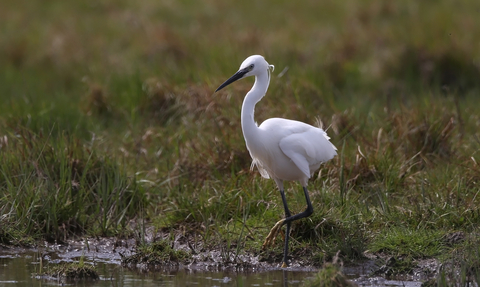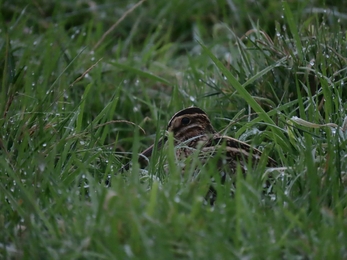
Little Egret by Margaret Holland
Day 2: Wetland Birds
Welcome to day 2
On day 2 of the course, we're heading to wetlands to find some more species you can expect to spot in Dorset this spring. Wetland habitats can be found at the lower reaches of the county's Piddle, Frome and Stour rivers as they reach Poole and Christchurch's harbours. The Fleet Lagoon at Chesil, near Weymouth, also features wetland habitat.
Lapwing
Vanellus vanellus
Statistics
Length: 28-31cm
Wingspan: 84cm
Weight: 230g
Average lifespan: 4 years
How to identify
Lapwings can be recognised by their long crests, black and white patterns, and very broad, round wingtips. From a distance, lapwings look black and white, but up-close, the back has an iridescent green and purple sheen.
Did you know?
As well as 'lapwing' and 'peewit', this bird is also known locally as the 'green plover'. Its Latin, Vanellus, means 'little fan' and actually refers to its floppy, flapping flight. The name lapwing is thought to derive from an Old English term meaning 'leap with a flicker in it' because the dense winter flocks appear to flicker between white and black when the birds flap their wings.
Little egret
Egretta garzetta
Statistics
Length: 60cm
Wingspan: 92cm
Weight: 450g
Average lifespan: 5 years
How to identify
The little egret is a white heron with black legs and yellow feet. It has a black bill and long plumes on its head and neck during the breeding season.
Did you know?
The long neck plumes of little egrets were once more valuable than gold and were smuggled into Europe during the 19th century. As a result, little egret populations plummeted until laws were put in place to protect them.
Snipe
Gallinago gallinago
Statistics
Length: 25-27cm
Wingspan: 46cm
Weight: 110g
Average lifespan: 3 years
How to identify
Snipe are brown, with an intricate pattern of black and gold bars, and a stripy brown and gold head. They have short, greyish-green legs and a very long, straight bill. The snipe is smaller than the similar-looking woodcock and is a bird of grasslands and moorlands, rather than woodlands.
Did you know?
Snipe have a flexible tip to the beak that is full of nerves; this helps them to feel for worms deep underground and then open the end of their beak to grab them.








